Dr. Phil Zeltzman’s Blog
An early spay could save your pet from emergency surgery
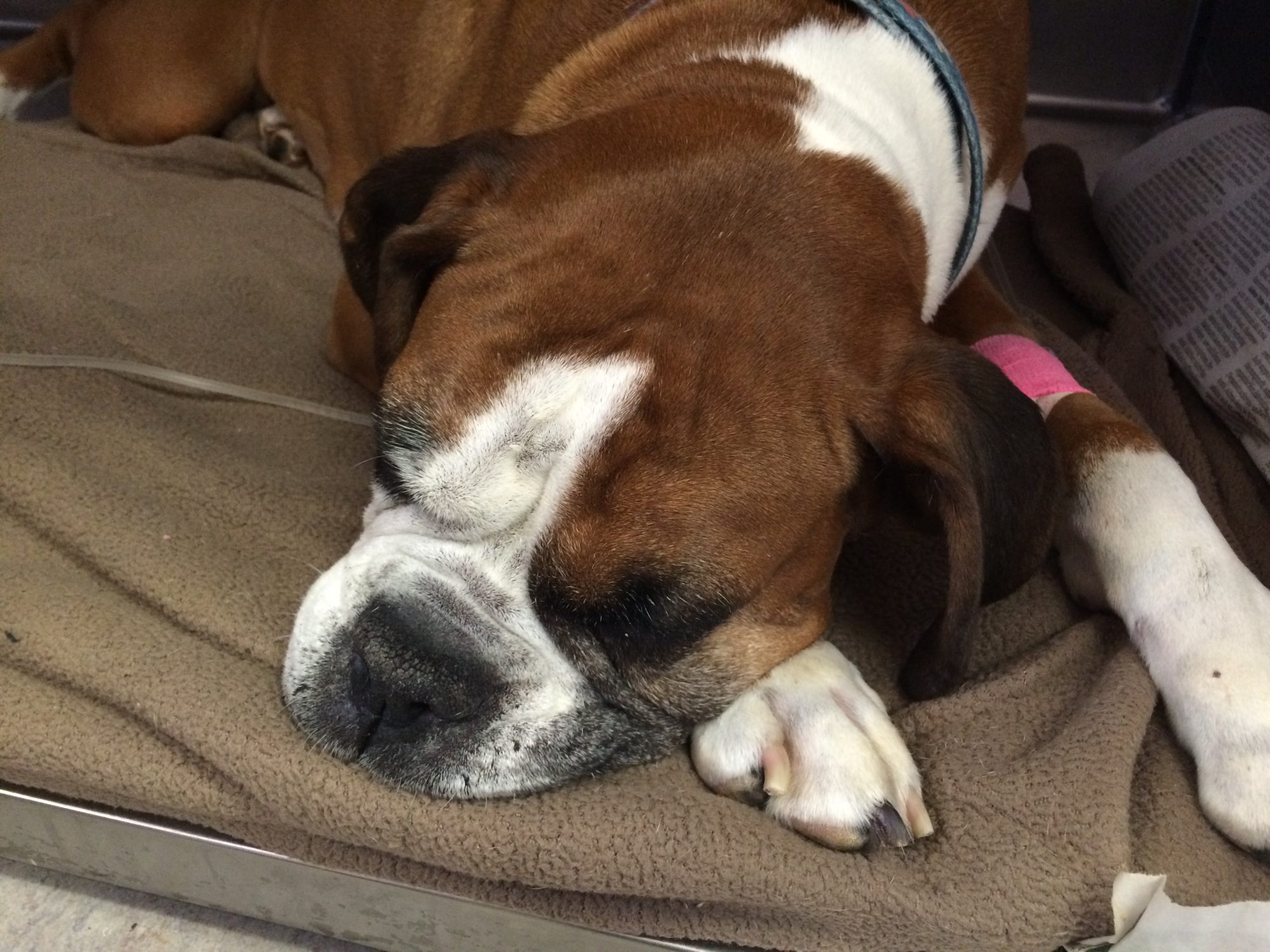 Dakota, a 7-year-old female Boxer, was brought to her family vet because she hadn’t been acting herself for about two weeks. She was drinking more, eating less, and seemed weak.
Dakota, a 7-year-old female Boxer, was brought to her family vet because she hadn’t been acting herself for about two weeks. She was drinking more, eating less, and seemed weak.
X-rays revealed that Dakota had a very large uterus. Her classic symptoms and the X-rays confirmed that Dakota had a pyometra. This means that her uterus was filled with a large amount of pus.
This can be deadly.
Emergency surgery was performed that same evening at Brodheadsville Veterinary Clinic. Removing a pyometra is essentially a complicated spay procedure. The main difference is that the uterus is huge and filled with infected fluid. Care must be taken to remove the infected uterus without any spillage to the rest of the belly. After surgery, the uterus weighed in at 7 pounds.
You can see a video of part of the surgery below. Just know that it contains graphic footage of a surgical procedure, so if you’re sensitive to that you may want to skip the video.
Dakota recovered quickly from surgery and anesthesia, and started eating and drinking normally shortly after that. She was back to her lovable self in one week.
Spaying your pets is essential! If you spay your cat or dog at an early age, you help reduce the risk of uterine cancer, ovarian cancer, and pyometra. Plus, spaying your pet before the first heat cycle virtually eliminates the risk of mammary tumors (including breast cancer).
If you are not planning to breed your female pet, please plan to have her spayed before she ends up in a life-threatening situation!
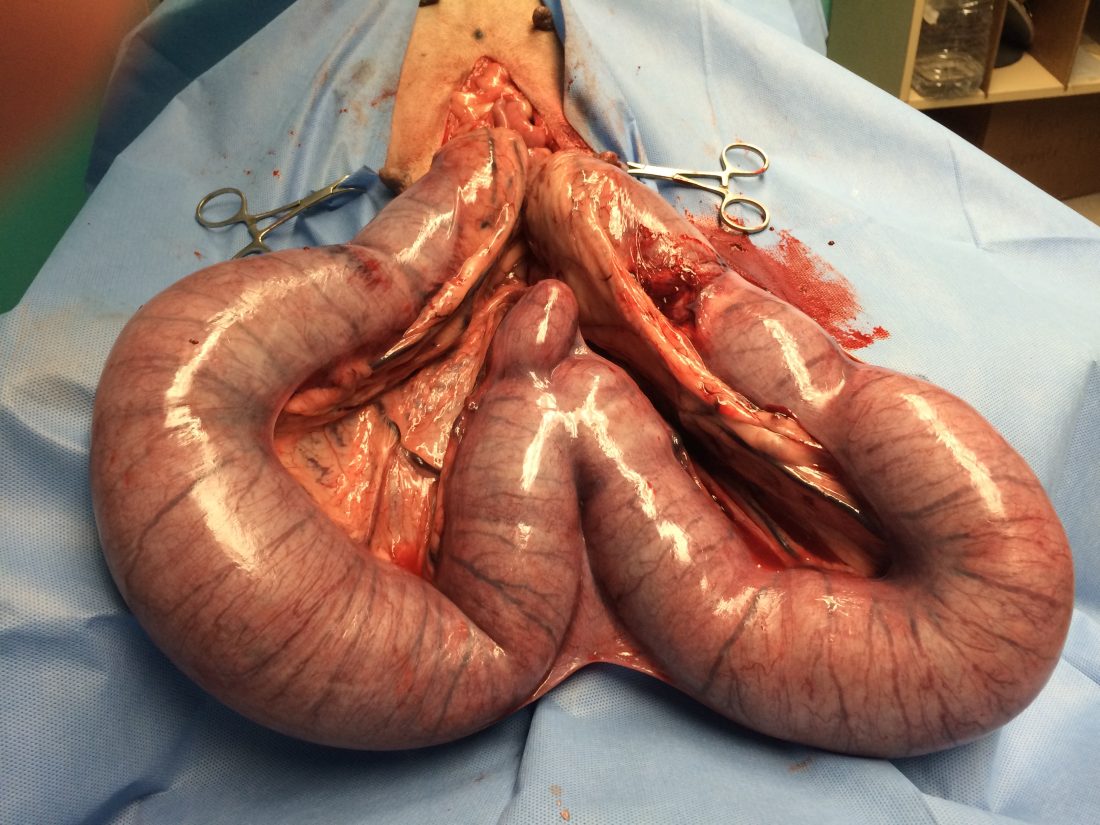 Dakota’s uterus during surgery |
 A post-op picture of the removed uterus. |

Dr. Phil Zeltzman is a traveling veterinary surgeon in Pennsylvania & New Jersey. An award-winning author, he loves to share his adventures in practice along with information about vet medicine and surgery that can really help your pets. Dr. Zeltzman specializes in orthopedic, neurologic, cancer, and soft tissue surgeries for dogs, cats, and small exotics. By working with local family vets, he offers the best surgical care, safest anesthesia, and utmost pain management to all his patients. Sign up to get an email when he updates his blog, and follow him on Facebook, too!
Senior kitty struggles at the litter box
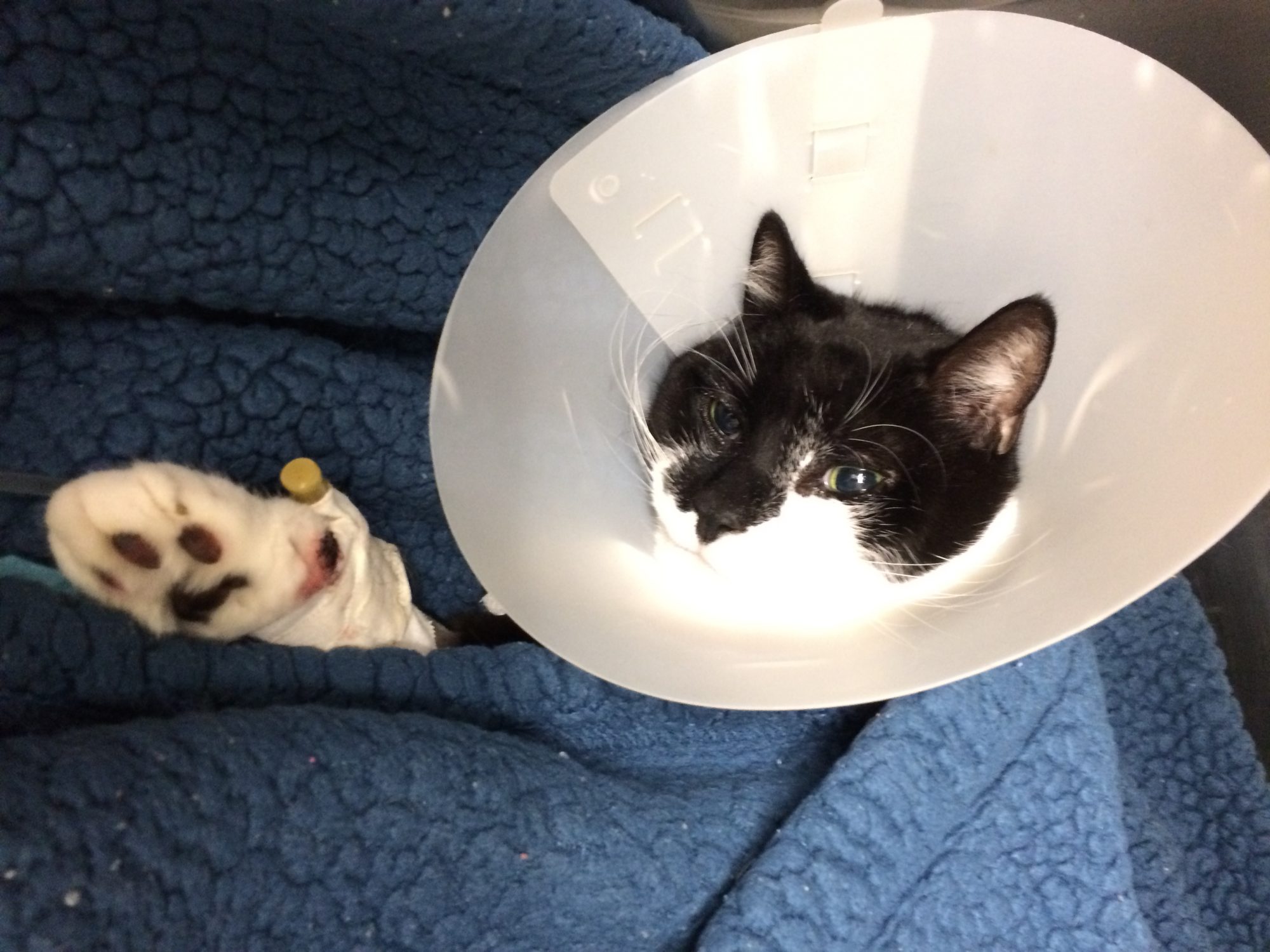 Phantom is an 11-year-old cat. 9 years ago, he was struggling to urinate. After several episodes of urinary blockage, which prevented him from peeing, he had a perineal urethrostomy, or P/U, to widen the opening of his urethra.
Phantom is an 11-year-old cat. 9 years ago, he was struggling to urinate. After several episodes of urinary blockage, which prevented him from peeing, he had a perineal urethrostomy, or P/U, to widen the opening of his urethra.
Over time, he has a few more episodes of blockage. The previous P/U site had scarred down and was so tiny that he couldn’t urinate at all.
I was called to perform surgery to allow him to urinate again.
I recommended performing a prepubic urethrostomy at Animal Clinic of Morris Plains. This is a procedure done inside the belly. The urethra is cut off and rerouted to the skin of the belly. A new opening is created, which means that Phantom will pee like a male dog.
Phantom urinated nicely overnight and went home the next day.
In the right hands, a perineal urethrostomy is a life-saving and reliable surgery. Even if it fails, which should be very rare, there is hope. Please don’t euthanize your cat if you end up in this situation. Sometimes the initial surgery may be repairable. If not, a prepubic urethrostomy is a great option to help your cat!

Dr. Phil Zeltzman is a traveling veterinary surgeon in Pennsylvania & New Jersey. An award-winning author, he loves to share his adventures in practice along with information about vet medicine and surgery that can really help your pets. Dr. Zeltzman specializes in orthopedic, neurologic, cancer, and soft tissue surgeries for dogs, cats, and small exotics. By working with local family vets, he offers the best surgical care, safest anesthesia, and utmost pain management to all his patients. Sign up to get an email when he updates his blog, and follow him on Facebook, too!
Bulldog loses a toe
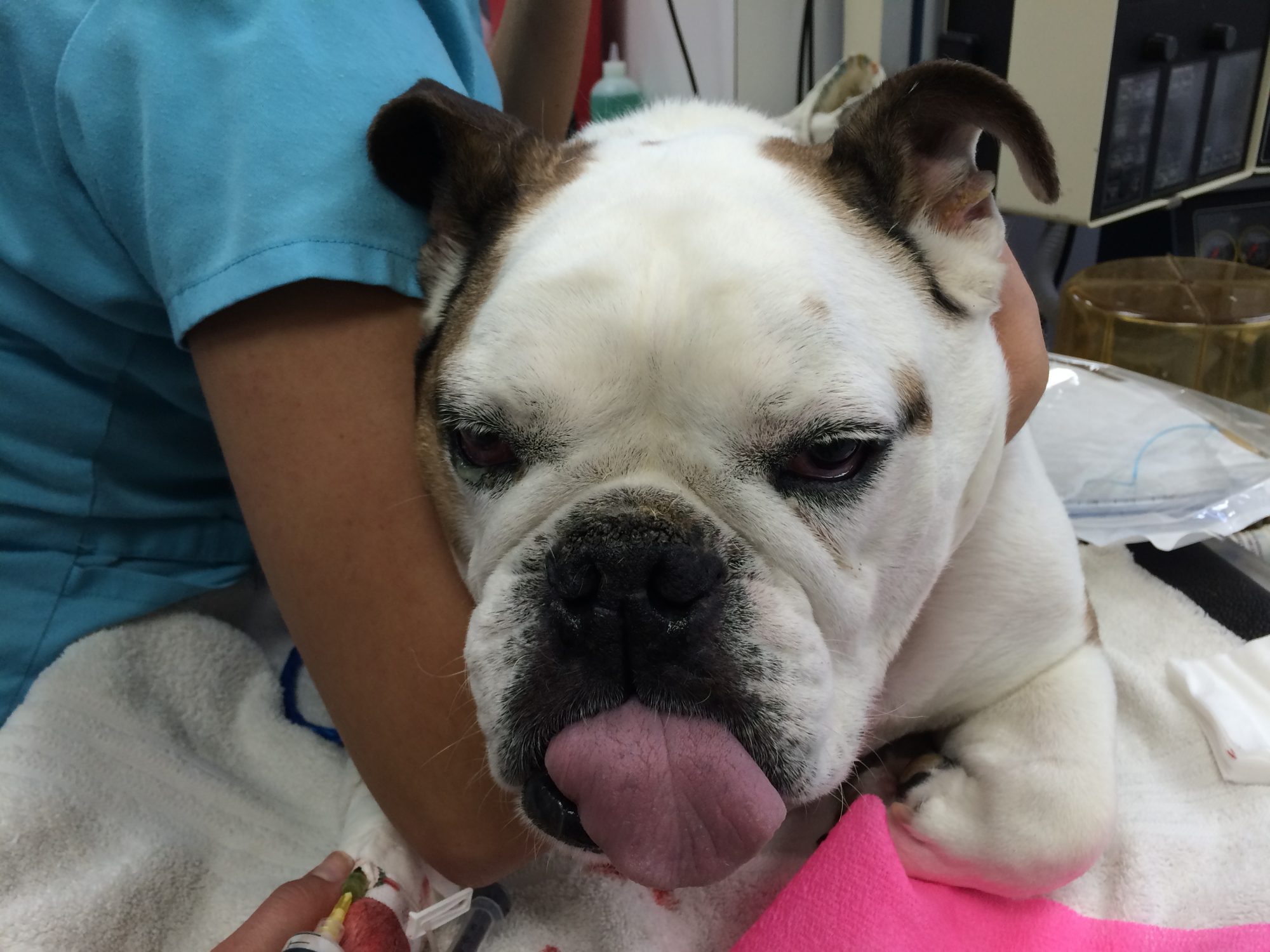 Rocky, a nine-year-old Bulldog, developed a large mass on one of his toes.
Rocky, a nine-year-old Bulldog, developed a large mass on one of his toes.
It grew to a point that it was difficult to remove and close the skin without sacrificing a toe. In addition, we needed to remove enough tissue around the tumor to “get it all.” I amputated the mass along with the toe at Barton Heights Veterinary Hospital.
About a week later, the biopsy came back… benign! The mass was a nevus – a rather unusual diagnosis in a pet. Rocky recovered very well and was soon walking normally.
Losing a toe may sound terrible, but dogs adjust very nicely!
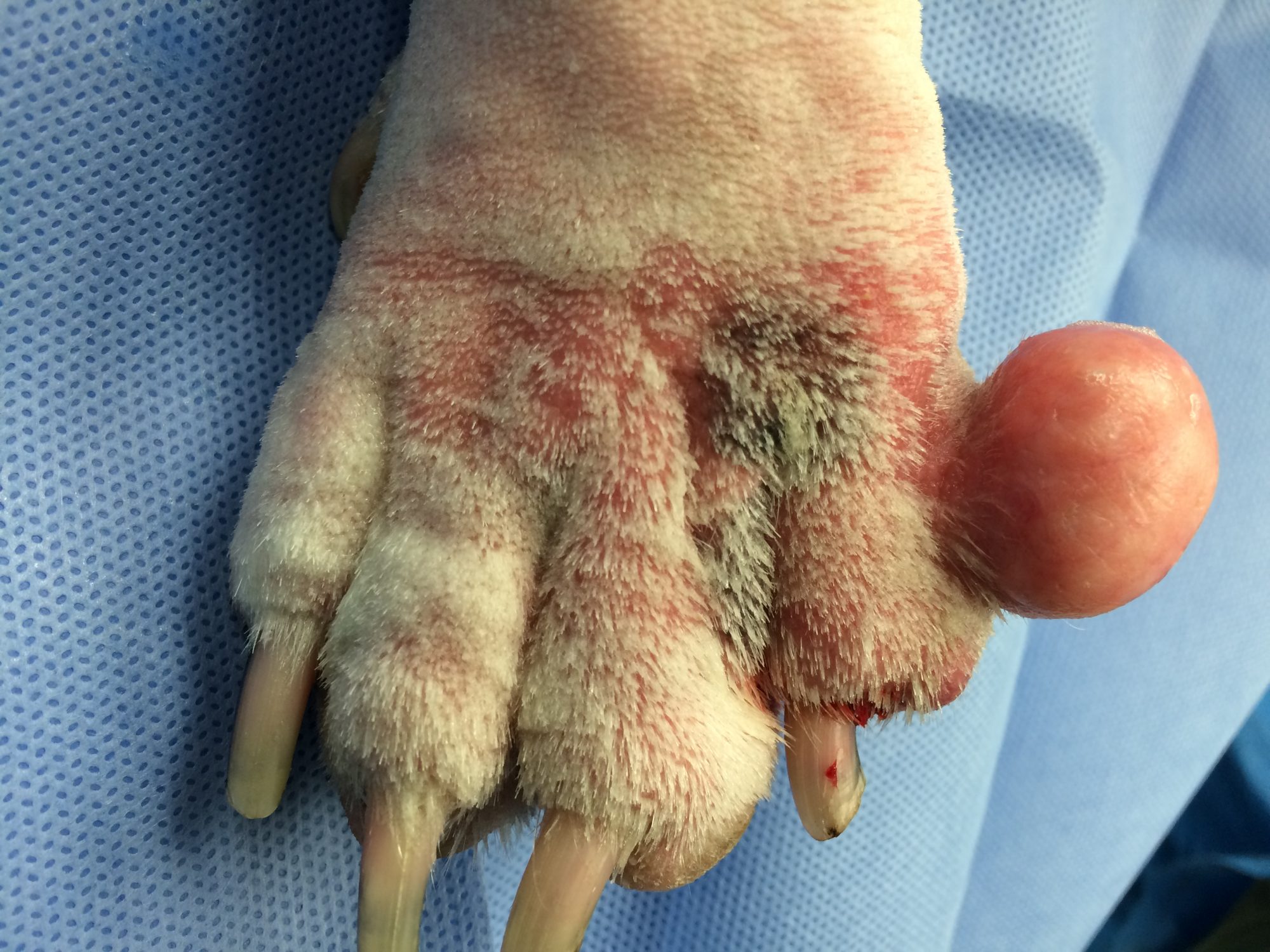 |
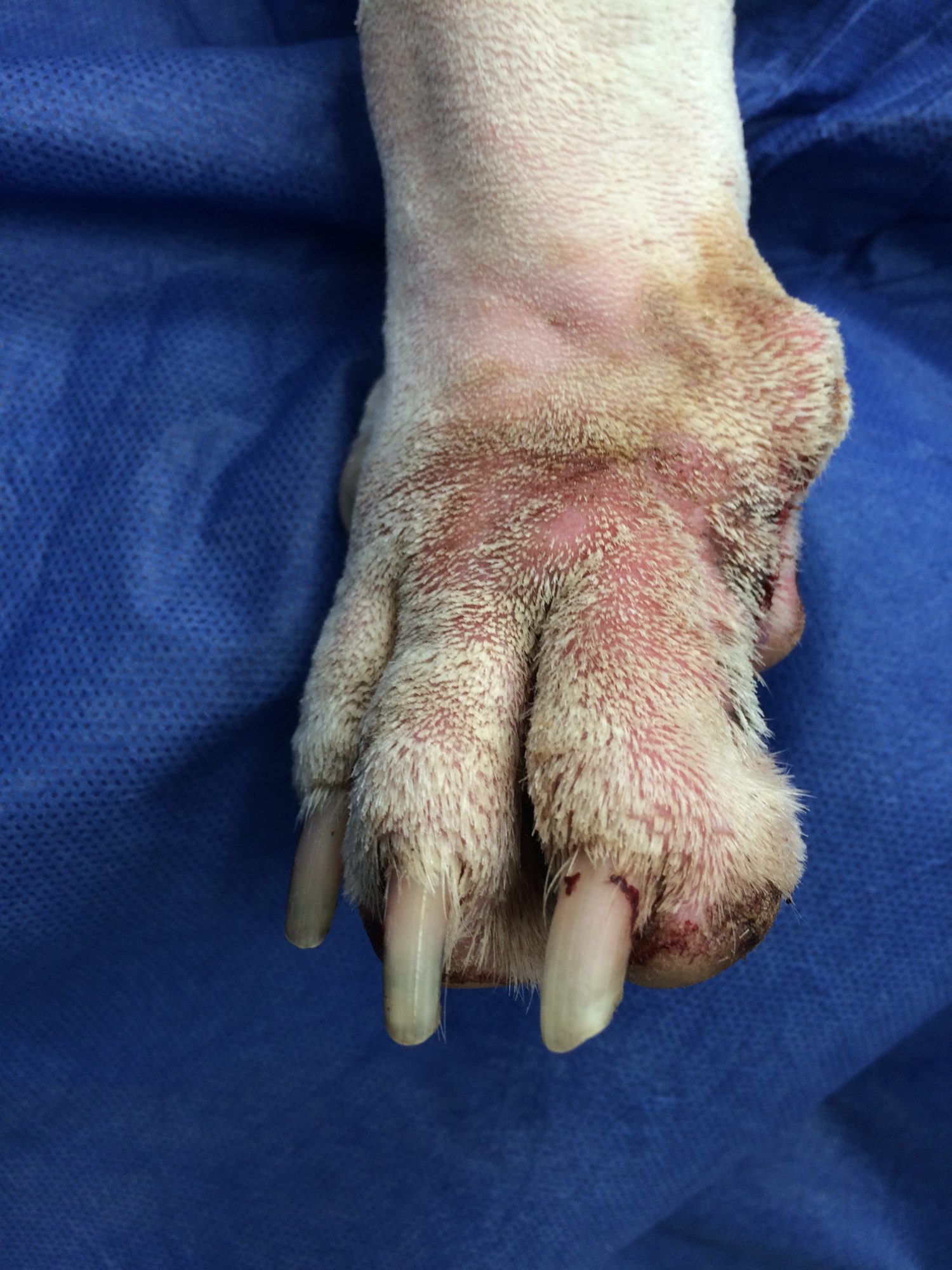 |

Dr. Phil Zeltzman is a traveling veterinary surgeon in Pennsylvania & New Jersey. An award-winning author, he loves to share his adventures in practice along with information about vet medicine and surgery that can really help your pets. Dr. Zeltzman specializes in orthopedic, neurologic, cancer, and soft tissue surgeries for dogs, cats, and small exotics. By working with local family vets, he offers the best surgical care, safest anesthesia, and utmost pain management to all his patients. Sign up to get an email when he updates his blog, and follow him on Facebook, too!
Happy Halloween!
I hope all my clients, patients, and all you animal lovers have a safe and happy Halloween!


Dr. Phil Zeltzman is a traveling veterinary surgeon in Pennsylvania & New Jersey. An award-winning author, he loves to share his adventures in practice along with information about vet medicine and surgery that can really help your pets. Dr. Zeltzman specializes in orthopedic, neurologic, cancer, and soft tissue surgeries for dogs, cats, and small exotics. By working with local family vets, he offers the best surgical care, safest anesthesia, and utmost pain management to all his patients. Sign up to get an email when he updates his blog, and follow him on Facebook, too!
Long-suffering Cocker Spaniel gets surgical relief
 Pepper had a long history of ongoing and recurring ear infections. By the time I met Pepper, a nine-year-old Cocker, he had “end stage otitis.”
Pepper had a long history of ongoing and recurring ear infections. By the time I met Pepper, a nine-year-old Cocker, he had “end stage otitis.”
This means the ear canal was a stinky, painful, rock-hard mess.
Be glad I can’t share the smell with you!
Every conceivable treatment was tried, and in the end conservative options failed. The only good solution to help Pepper was a procedure called TECA, or Total Ear Canal Ablation.
Pepper’s owners felt that his left ear was worse, so I performed a left ear TECA.
I removed the the entire diseased and infected ear canal. The ear flap stays of course!
After 3 weeks, the surgery site healed very nicely and Pepper was doing great. Now he is ready for a TECA on the right side!
Surgery is a great option for dogs with repeated ear infections. Cocker Spaniels in particular have trouble with infections and can be helped by surgery.
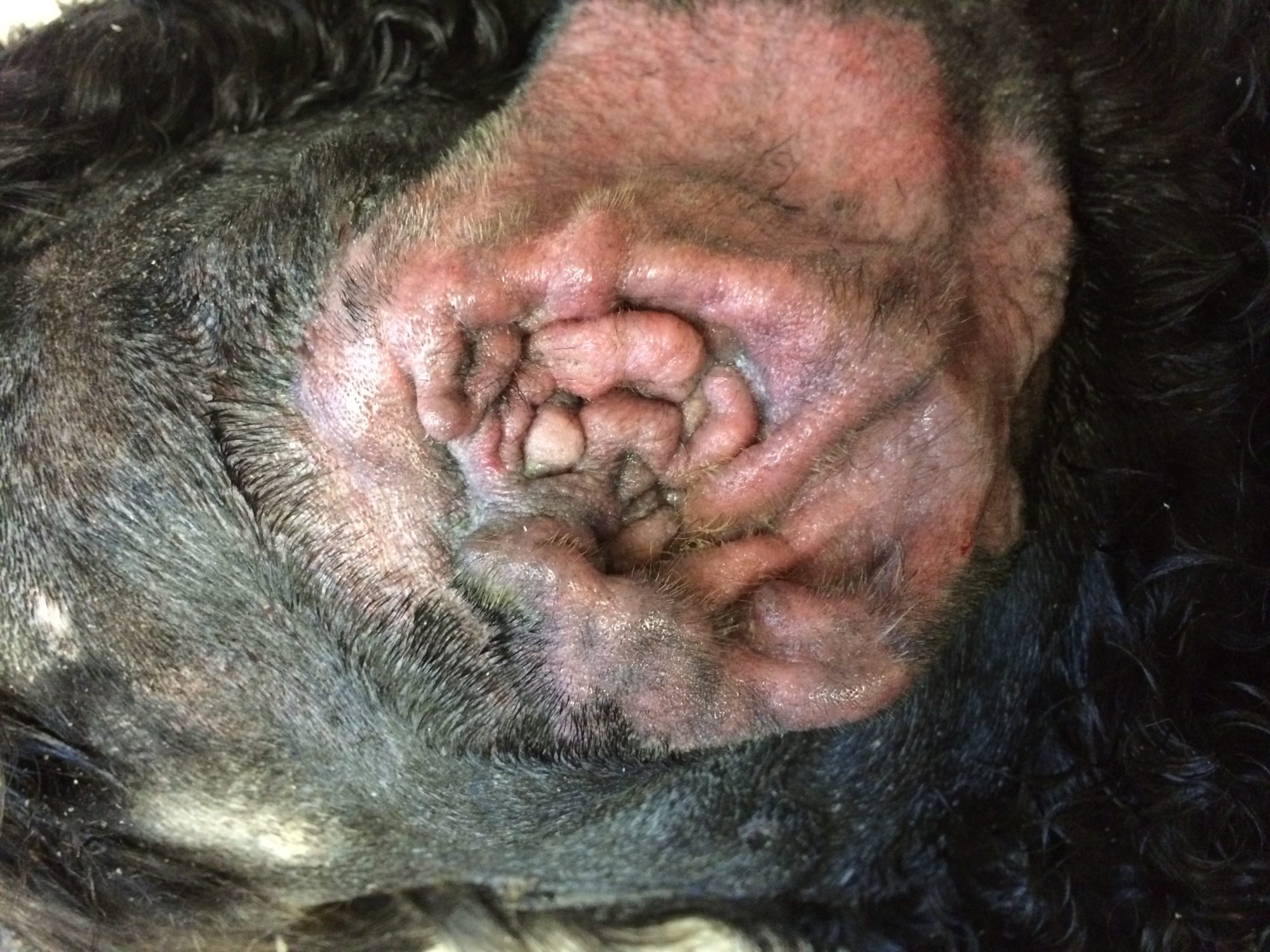 End stage otitis. |
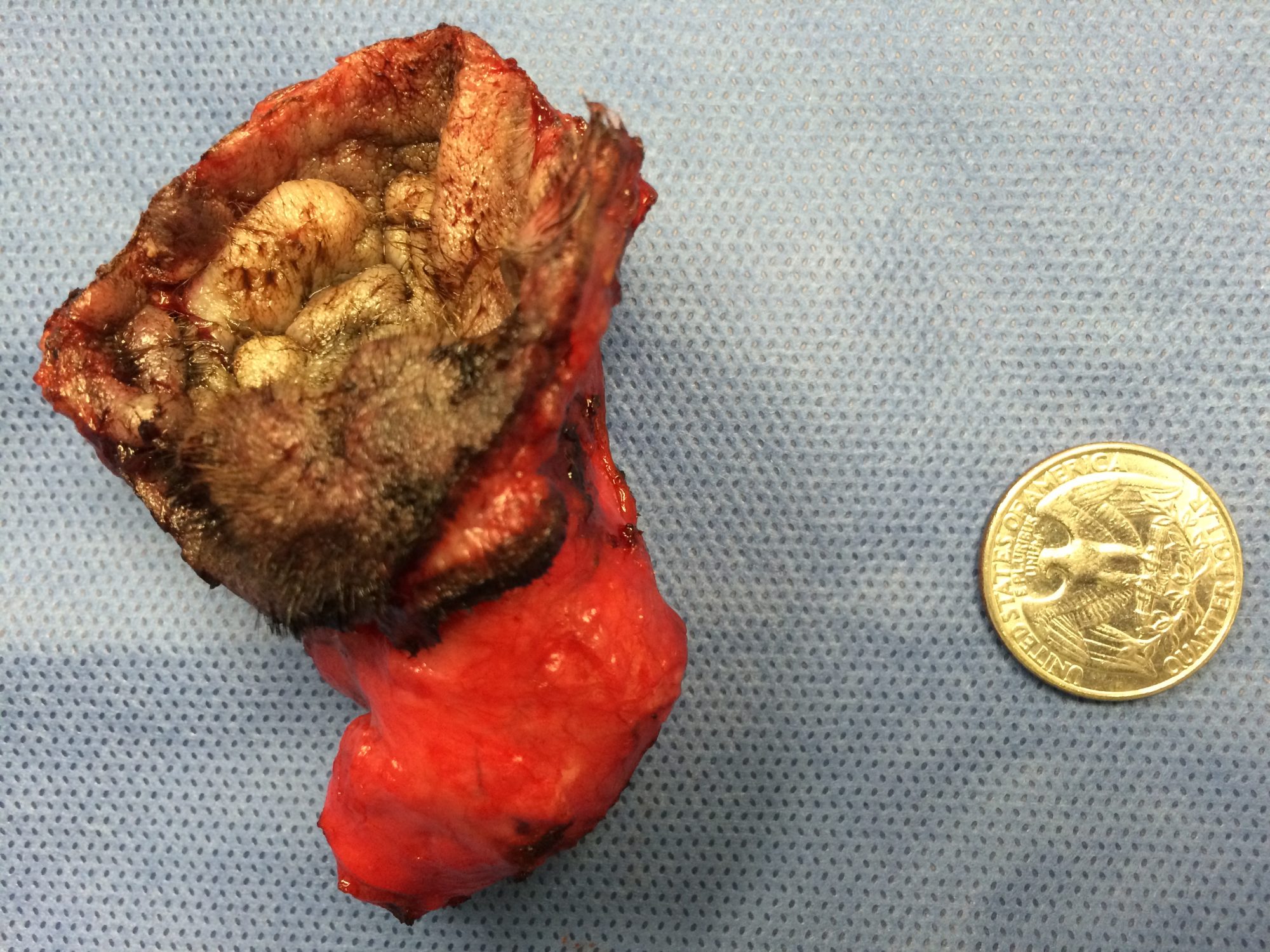 The ear canal after removal. |
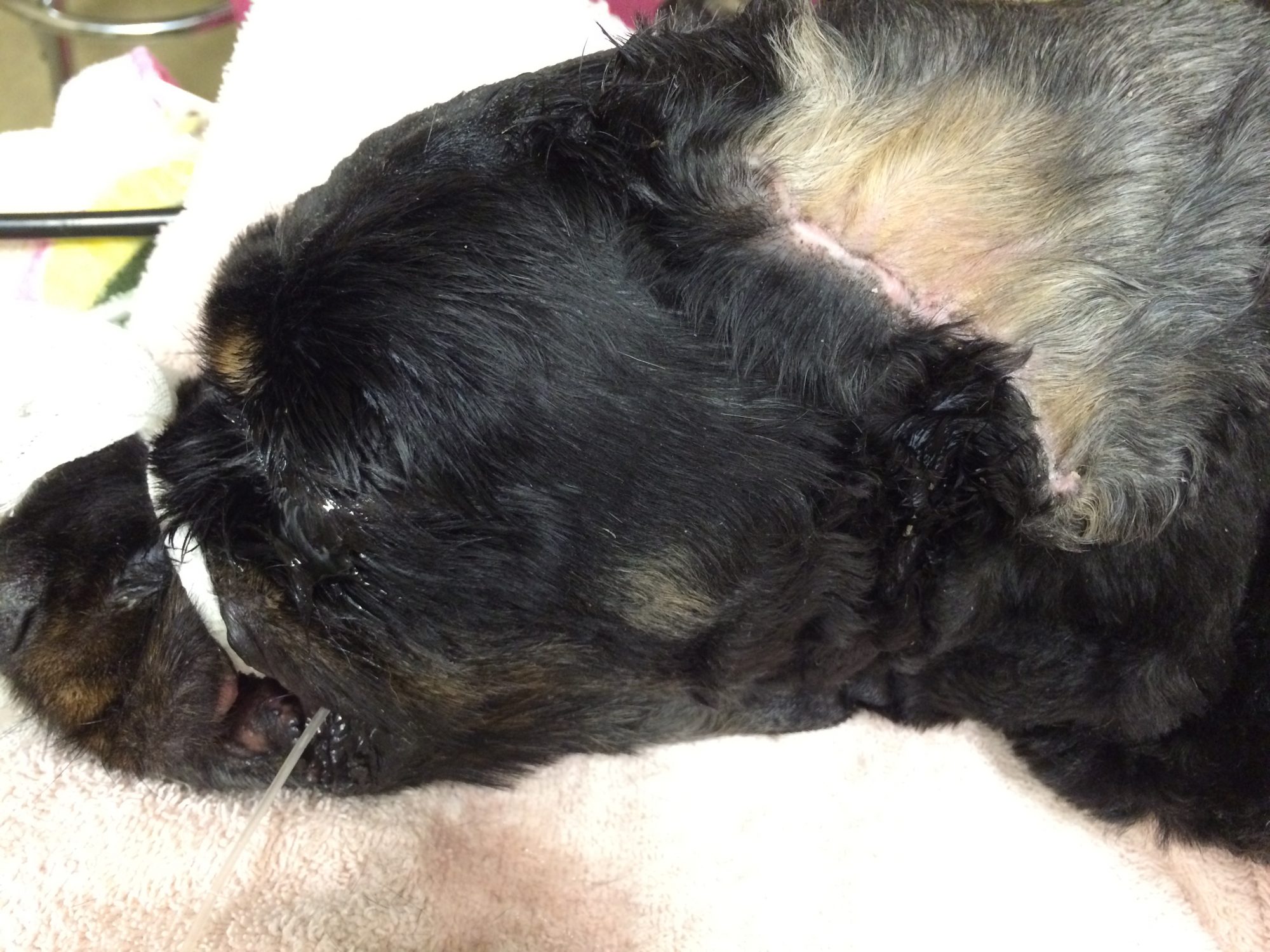 The left ear incision healed, and Pepper was ready for surgery on this right ear. |

Dr. Phil Zeltzman is a traveling veterinary surgeon in Pennsylvania & New Jersey. An award-winning author, he loves to share his adventures in practice along with information about vet medicine and surgery that can really help your pets. Dr. Zeltzman specializes in orthopedic, neurologic, cancer, and soft tissue surgeries for dogs, cats, and small exotics. By working with local family vets, he offers the best surgical care, safest anesthesia, and utmost pain management to all his patients. Sign up to get an email when he updates his blog, and follow him on Facebook, too!

